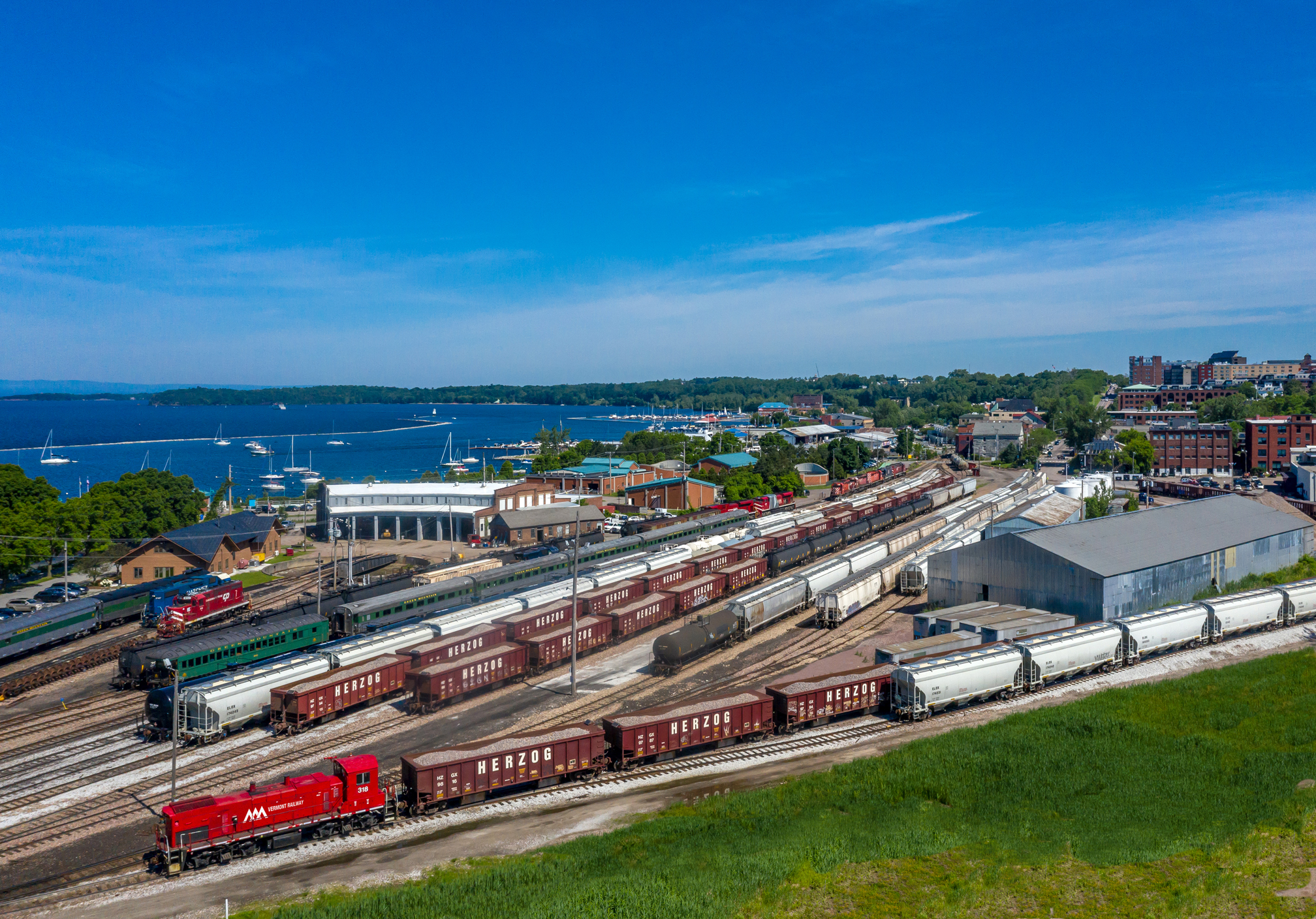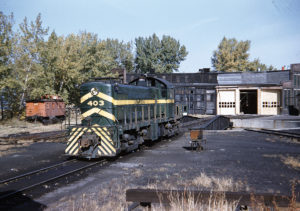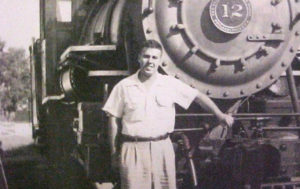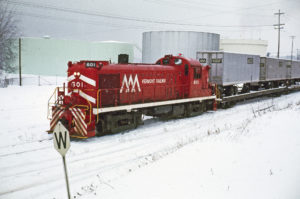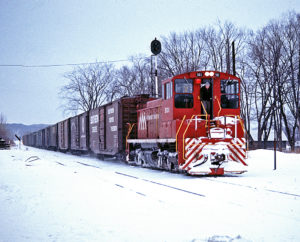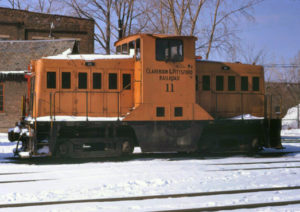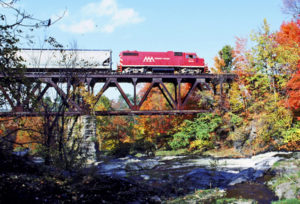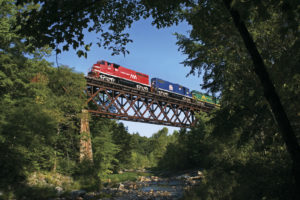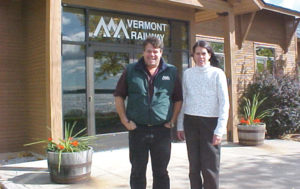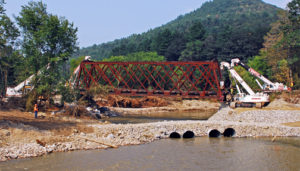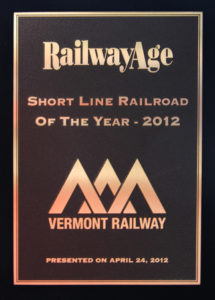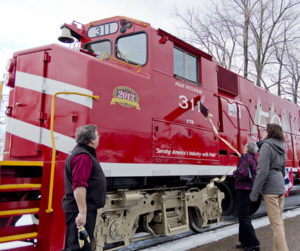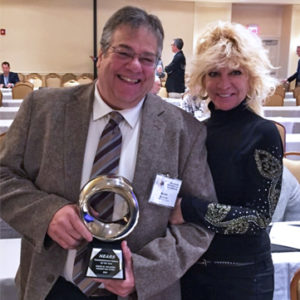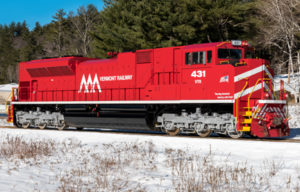
Vermont Rail System is an affiliation of six shortlines; Vermont Railway (VTR), Green Mountain Railroad (GMRC), Clarendon and Pittsford Railroad (CLP), Washington County Railroad (WACR), New York and Ogdensburg Railway (NYOG), and New England Southern Railroad (NEGS). Individually, each shortline provides personalized, efficient, and reliable rail freight service to a wide variety of on-line customers. Joined in common ownership the railroads form a strategic alliance that allows for better utilization of manpower and equipment, resulting in an increased level of service to customers.
Approximately 90 percent of carloads handled originate or terminate in Vermont. Some “local” movements, such as consignments of agricultural lime, both originate and terminate within the state. VRS also plays a critical link for international and inter-regional trade by connecting other railroads in Canada and Northern New England with those in Southern New England and the Eastern United States.

VRS Subdivisions
Vermont Railway (VTR)
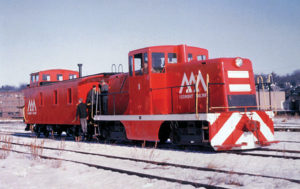 Acquired August 6th, 1963
Acquired August 6th, 1963
Burlington, VT to Bennington, VT & Hoosick Junction, NY
The Vermont Railway (VTR) was the nation’s first privately-owned railroad operating on a publicly-owned right of way. With daily freight trains operating between Burlington and Rutland, and service three days a week between Rutland and North Bennington, the VTR was able to restore freight traffic along Vermont’s Western Corridor with a strong commitment to customer service.
Clarendon & Pittsford Railroad (CLP)
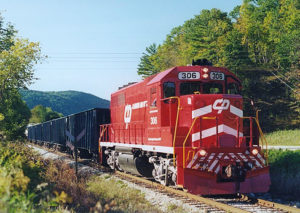 Acquired November, 1972
Acquired November, 1972
Rutland, VT to Whitehall, NY
the VTR purchased the Clarendon & Pittsford Railroad (CLP) from the Vermont Marble Company. The CLP serves the substantial ultra-modern limestone processing plant on the mountainside above Florence, Vermont, on a daily basis. OMYA soon became (and still is) the railroads biggest shipper. In August of 1983, the Clarendon & Pittsford purchased the Delaware & Hudson line between Rutland and Whitehall, New York. The 24-mile line soon became substantial to the shipping of fuel oil and gasoline through the CLP’s main interchange point in Whitehall, NY.
Green Mountain Railroad (GMRC)
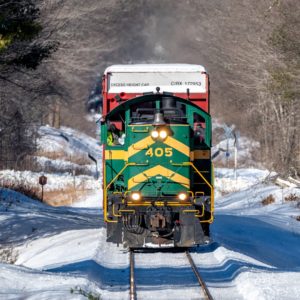 Acquired May, 1997
Acquired May, 1997
North Walpole, NH to Rutland, VT
The Vermont Railway’s purchase of the Green Mountain Railroad (GMRC) from president and significant stockholder Jerome Hebda in May of 1997, lead to the formation of the Vermont Rail System (VRS). At the time of the sale, the GMRC was well run, was operating with a lean and efficient staff, had a solid traffic base, and was debt free. The VTR was able to provide a strong maintenance-of-way policy with modern equipment and skilled employees to operate the GMRC more efficiently, which helped to improve business on the line.
Washington County Railroad Montpelier & Barre Division (WACR)
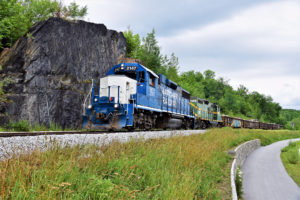 Acquired September, 1999
Acquired September, 1999
Montpelier to Graniteville
The line was formerly operated by the New England Central Railroad (NECR) and was struggling severely from the loss of so many customers. Today the line serves customers on a regular basis and has made many track improvements
New York and Ogdensburg Railway (NYOG)
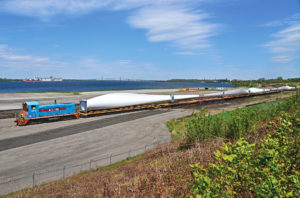 Acquired April, 2002
Acquired April, 2002
Norfolk, NY to Ogdensburg, NY
The NYOG consists of 31.2 miles of track between Norfolk and Ogdensburg, New York, and was a part of the former Rutland Railroad. Jay Wulfson always had his sights on purchasing this line in the future of his company. When the NYOG joined the VRS, the surviving Rutland Railroad rails were finally reunited under the same operator.
Washington County Railroad Connecticut River Division (WACR-CRD)
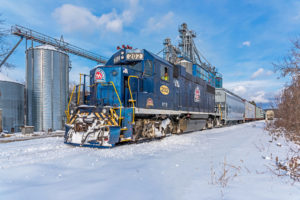 Acquired in 2003
Acquired in 2003
White River Junction, VT to Newport, VT
The VRS affiliate immediately went to work providing regular service and making a concerted effort to win back previous customers and gain the trust of new ones.
New England Southern Railroad (NEGS)
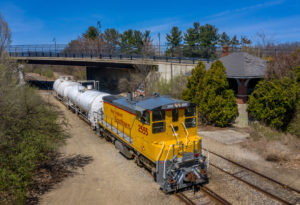 Acquired in 2020
Acquired in 2020
Tilton, NH to Concord, NH
Most recently, VRS has expanded operations further into New Hampshire, and now runs freight service north of Concord, NH on the New England Southern Railroad.
History Timeline
Today, the VRS family of over 150 dedicated railroaders operate more than 400 miles of track and haul over 25,000 freight cars each year. Nearly 90% of traffic is destined for Vermont businesses. The VRS operates passenger services running seasonal excursions and dinner trains. The railroad also hosts Amtrak’s Ethan Allen Express which runs daily between Burlington, VT, and New York City. Future plans include extended passenger service to Burlington and numerous infrastructure upgrades. With the same dedication to customer service it has had since its inception, the Vermont Rail System looks forward to expanding its customer base while they continue “Serving America’s Industry with Pride.”
Economic Impact
- Shipping by rail is the greenest transportation alternative in the USA
- The average rail can move 1 ton of freight, 480 miles, on 1 gallon of diesel fuel
- The average train can carry the freight of almost 300 trucks
- Moving freight via rail versus truck reduces greenhouse emissions by approximately 75%
- Almost every product used in America is transported via rail in one capacity or another
- Unlike other modes of transportation, America’s freight railroads operate almost exclusively on infrastructure they build, maintain, and finance
- Every freight rail job supports another 4.5 jobs somewhere else in our economy
- Rail is the safest way to transport freight
